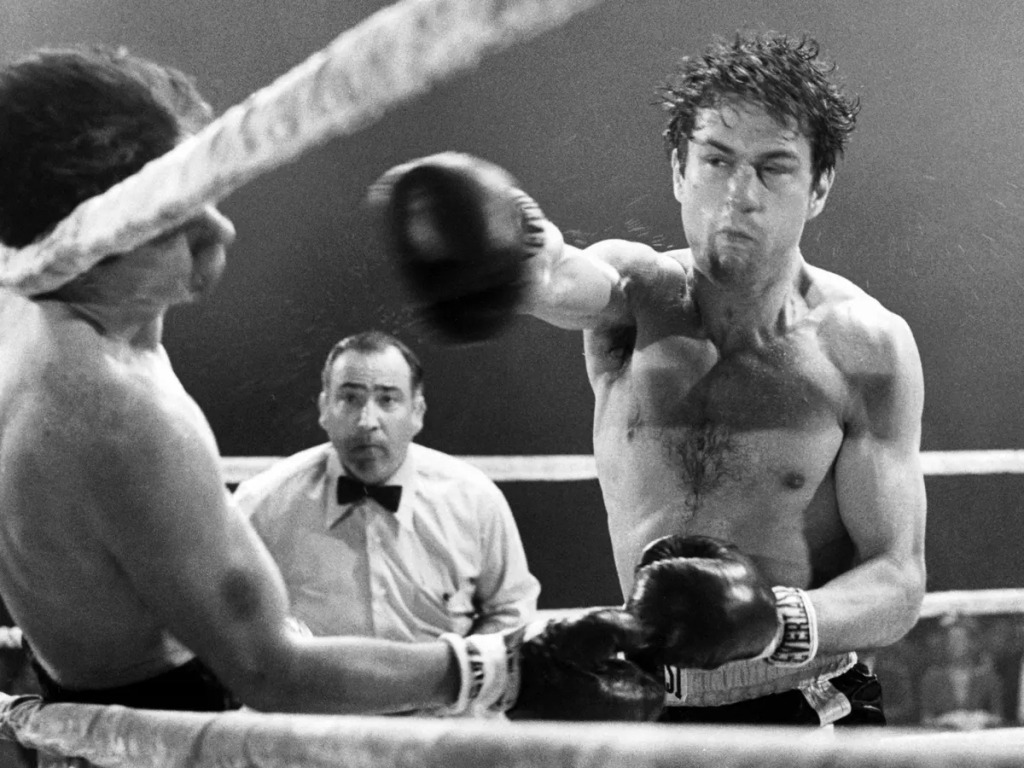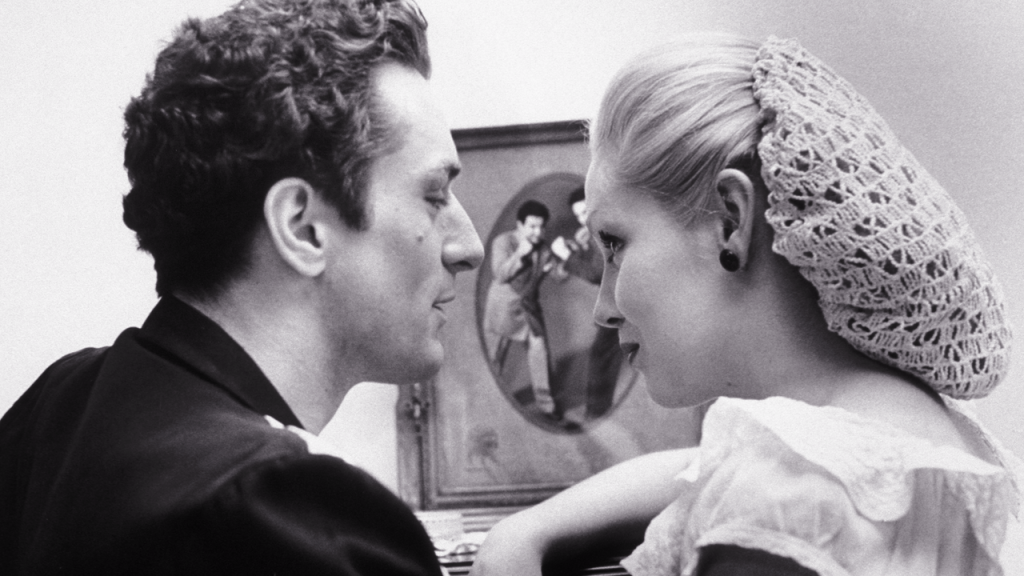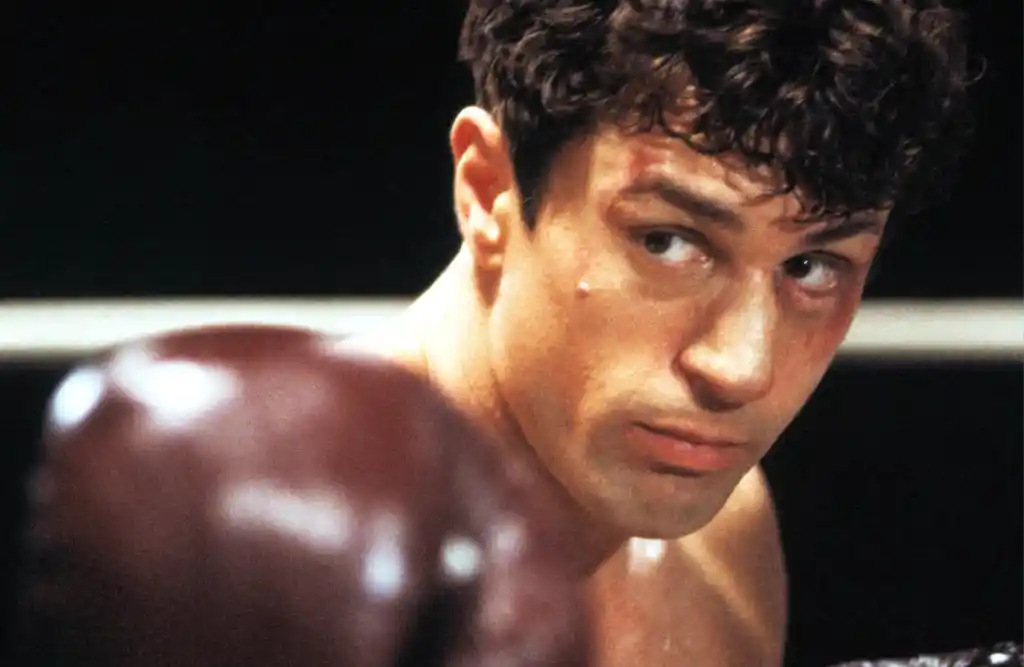“Raging Bull,” directed by Martin Scorsese and released in 1980, stands as a cinematic masterpiece that transcends the boxing genre. Based on the memoir of boxer Jake LaMotta, the film delves into the tumultuous life of a man driven by inner demons, offering a visceral and introspective exploration of violence, redemption, and the human psyche.
Cinematography and Visual Style:
One of the most striking elements of “Raging Bull” is its visual style, crafted by the collaboration between Martin Scorsese and cinematographer Michael Chapman. The film’s use of black and white photography lends it a stark, raw quality that complements the brutality of its subject matter. Scorsese employs a variety of innovative techniques, including slow-motion sequences, rapid cutting, and dynamic camera movements, creating a visual language that mirrors the chaotic emotional landscape of Jake LaMotta’s life.

Character Study and Method Acting:
At the heart of “Raging Bull” is Robert De Niro’s transformative performance as Jake LaMotta. De Niro’s commitment to method acting is evident as he undergoes a physical transformation to portray both the younger, more robust LaMotta and the older, heavier version. His portrayal goes beyond mere imitation, capturing the psychological complexities and vulnerabilities of the character. The intensity and authenticity of De Niro’s performance earned him the Academy Award for Best Actor.
Violence and Self-Destruction:
The film explores the inherently violent nature of Jake LaMotta, both in the boxing ring and in his personal life. Scorsese presents violence not as mere spectacle but as a manifestation of LaMotta’s inner turmoil. The boxing sequences, choreographed with meticulous detail, are brutal and unflinching, reflecting the character’s self-destructive tendencies and the destructive impact of toxic masculinity.
Redemption and Reflection:
While “Raging Bull” is undeniably a film about violence, it is also a story of redemption and self-reflection. The latter part of the film focuses on LaMotta’s life post-boxing career, grappling with his insecurities, failed relationships, and the consequences of his violent past. The scenes where LaMotta confronts his reflection in the mirror symbolize a deeper introspection, offering a poignant exploration of regret and self-awareness.

Soundtrack and Atmosphere:
The film’s soundtrack, featuring classical compositions by Pietro Mascagni and popular songs from the era, enhances the emotional impact of the narrative. The juxtaposition of operatic music with scenes of brutality creates a unique and powerful atmosphere, underscoring the tragic beauty of LaMotta’s life.
Legacy and Critical Acclaim:
“Raging Bull” received critical acclaim upon its release and has since become a staple in discussions of cinematic excellence. It is often regarded as one of the greatest films ever made, praised for its artistic innovation, psychological depth, and the unparalleled commitment of its cast and crew.
In conclusion, “Raging Bull” is a cinematic tour de force that transcends its boxing origins to offer a profound exploration of the human condition. Through its visual and narrative techniques, the film paints a visceral portrait of a man consumed by violence and inner turmoil, ultimately crafting a timeless and deeply affecting work of art.
